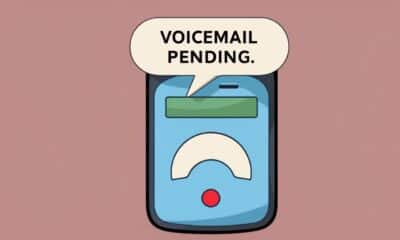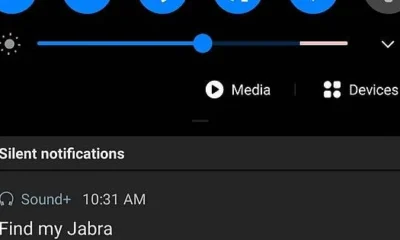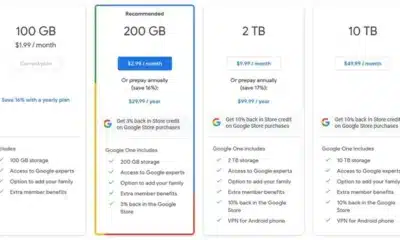Phones
On Screen Keyboard Putting Spaces After Each Letter?

With the rise of touchscreen devices and the accessibility features in modern operating systems, the on-screen keyboard has become a crucial tool for many users. However, like any software, the on-screen keyboard can sometimes exhibit strange behaviors that can disrupt the user experience. One such issue that users have reported is their on-screen keyboard adding unwanted spaces after each letter they type. This can severely slow down their typing speed and can be a major inconvenience. This article aims to provide a comprehensive guide to understanding and resolving this particular issue.
Understanding the Issue
When it comes to problems with on-screen keyboards, one might think it’s a simple glitch that requires a device restart. While a quick reboot can indeed solve some issues, others, like our “spaces after each letter” problem, might need a deeper dive. This behavior is typically not a feature of on-screen keyboards, which are designed to emulate the performance of a physical keyboard as closely as possible. However, certain factors might trigger this unwanted behavior.
One possible cause of this issue could be the keyboard settings. Every operating system provides customization options for their on-screen keyboard, allowing users to adapt the tool to their specific needs and preferences. While this is generally a positive feature, incorrect configurations or accidental changes can sometimes lead to unwanted behaviors, such as the insertion of spaces after each letter.
Another potential culprit could be a software glitch. As complex pieces of code, software can sometimes behave unexpectedly due to errors or bugs. This could range from minor, barely noticeable issues to more significant problems like the one we’re discussing.
Finally, the issue could be caused by outdated software. Developers regularly release updates to their software to fix bugs, improve performance, and add new features. However, if users don’t keep their software up-to-date, they may run into issues that have already been resolved in later versions.

Methods to Resolve the Issue
Checking Keyboard Settings
Your first course of action when dealing with this issue should be to check the settings of your on-screen keyboard. This is a process that varies from one operating system to another, but the general approach remains similar.
In Windows, you can access the keyboard settings by navigating to the Control Panel and selecting the “Ease of Access” center. Here, you will find the option to “Change how your keyboard works”. It’s possible that the “Sticky Keys” or “Filter Keys” options are enabled, which can sometimes result in extra spaces being added. These features are designed to help people who have difficulties pressing keys but can cause issues for other users. Make sure to uncheck these boxes if they are enabled.
On the other hand, if you’re using a mobile device with Android or iOS, the process is slightly different. You need to go into the settings app, then find the “Language & Input” or “General” option, respectively. From there, navigate to the keyboard settings and ensure that there’s no option enabled that could cause the addition of extra spaces.
Remember that each keyboard app might have its own settings, so make sure to check these as well. Look for settings related to “auto-spacing” or “auto-punctuation” and disable them if they’re enabled.

Updating the Keyboard Software
If checking the keyboard settings doesn’t resolve the issue, the next step is to ensure that your keyboard software is up-to-date. This is a relatively straightforward process, but it can have a significant impact on your keyboard’s performance.
For Windows users, updates are typically provided through the Windows Update feature. You can access this by going into your settings and selecting “Update & Security”. Here, click on “Check for updates” to ensure your system and its features are up-to-date.
Mobile users will need to update their keyboard app. This can be done through the App Store for iOS users or the Google Play Store for Android users. Just search for your keyboard app and click “Update” if an update is available.
Keeping your software updated is crucial for several reasons. Not only does it provide you with the latest features, but it also ensures that you benefit from all the bug fixes and performance improvements that the developers have implemented. It’s generally a good idea to enable automatic updates to ensure that your software is always up-to-date.
Reinstalling the Keyboard Software
If updating the software doesn’t solve the problem, the next step is to try reinstalling the keyboard software. This process involves uninstalling the current keyboard software and then reinstalling it from the source. While this might sound like a drastic measure, it can sometimes be the most effective solution.
For Windows users, this involves going into the “Apps & features” option in your settings, finding the on-screen keyboard software, and selecting “Uninstall”. Once this is done, you can reinstall it from the Microsoft Store.
For mobile users, the process is a bit different. You need to long-press on the keyboard app’s icon on your home screen, then select “Uninstall”. Once the app is uninstalled, you can reinstall it from your device’s app store.
Reinstalling the keyboard software can solve the issue because it removes any corrupted files or settings that might be causing the problem. When you reinstall the software, you’re essentially starting with a clean slate, which can often resolve any lingering issues.
Contacting Support
If none of the methods outlined above solve the problem, your last resort is to contact customer support. Whether you’re using a built-in keyboard on a Windows device or a third-party app on your mobile device, the developers will have a support team ready to help you with any issues.
When contacting support, make sure to describe your problem as clearly and accurately as possible. Provide them with all the relevant details, such as your device model, operating system version, and the exact nature of the issue. Also, let them know about all the troubleshooting steps you’ve already taken, as this can help them narrow down the potential causes of the problem.

Prevention Tips
While dealing with a problem like this is frustrating, there are steps you can take to prevent such issues from happening in the future. Regularly updating your software, for example, can prevent many issues from occurring. As mentioned earlier, updates often contain bug fixes and performance improvements that can prevent various problems.
Additionally, make it a habit to review your keyboard settings periodically. This can help you catch any unwanted changes before they cause issues. Also, be mindful when you’re making changes to the settings, and ensure you understand what each setting does before altering it.
Conclusion
Dealing with an issue like an on-screen keyboard adding spaces after each letter can be a significant inconvenience. However, by understanding the potential causes and knowing how to troubleshoot the problem, you can get your keyboard back to functioning as it should.
Remember that technology isn’t perfect, and issues like these can occur from time to time. The key is to remain patient and approach the problem methodically. Whether it’s a simple settings issue, a need for an update, or a more complex software problem, there’s always a solution. And if all else fails, don’t hesitate to reach out for professional help.
With regular maintenance and a keen eye for potential issues, you can ensure that your on-screen keyboard remains a reliable tool for your daily needs.
-

 Tech6 months ago
Tech6 months agoAndroid Auto Disconnects When Phone is Locked? – Easy Fix
-

 Gadgets5 months ago
Gadgets5 months agoCan Dogs Use VR Headsets?
-

 Tech5 months ago
Tech5 months agoWhat Does “Voicemail Pending” Mean?
-

 Phones5 months ago
Phones5 months agoHow Do I Know if My Phone Supports AR?
-

 Tech5 months ago
Tech5 months agoDoes Astigmatism Affect Your VR Experience?
-

 Business5 months ago
Business5 months agoHow Do You Make an AR Without Coding?
-

 Phones4 months ago
Phones4 months agoWhat To Do About That Weird Notification Sound on Android?
-

 Tech4 months ago
Tech4 months agoHow Can I Get Google Drive 1TB for Free?



















